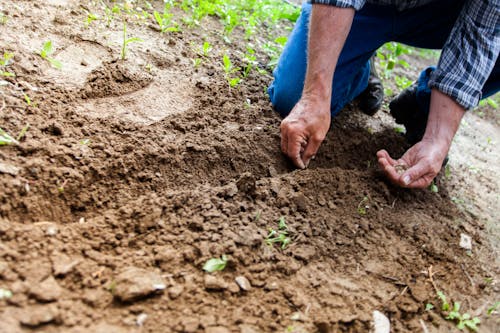Unlocking the Potential of Ginger Plant Seeds: Expert Tips & Guidelines
Discover everything you need to know about ginger plant seeds, from planting to harvesting. Get expert insights and practical advice to cultivate your own ginger garden successfully.
Introduction:
Ginger is not just a versatile spice but also a fascinating plant with a rich history and myriad health benefits. While ginger is commonly propagated through rhizomes, it can also be grown from seeds for those seeking a unique gardening experience. In this comprehensive guide, we’ll delve into the world of ginger plant seeds, exploring the intricacies of cultivation, care, and harvest. Whether you’re a seasoned gardener or a novice enthusiast, join us on this journey to unlock the secrets of ginger plant seeds and cultivate your own bountiful harvest.
Selecting the Right Ginger Varieties
When it comes to ginger plant seeds, selecting the right varieties is crucial for success. Opt for disease-resistant and high-yielding ginger varieties suited to your climate and growing conditions. Popular ginger cultivars include Maran, Rio-De-Janeiro, and Nadia, each offering unique flavor profiles and growth habits.
Understanding Ginger Planting Zones
Ginger thrives in tropical and subtropical climates, preferring warm temperatures and high humidity. Before planting ginger seeds, assess your local climate and ensure it aligns with ginger’s requirements. While ginger can be grown in containers indoors, outdoor cultivation is ideal for maximizing yield and flavor.
Preparing the Soil for Ginger Seeds
Proper soil preparation is essential for successful ginger cultivation. Ensure the soil is loose, well-drained, and rich in organic matter to support healthy root development and vigorous growth. Incorporate compost or aged manure into the soil to enhance fertility and improve soil structure.
When to Plant Ginger Seeds
The timing of ginger seed planting depends on your local climate and growing season. In tropical regions, ginger seeds can be planted year-round, while in subtropical climates, spring is typically the best time to plant. Aim to plant ginger seeds when soil temperatures consistently exceed 70°F (21°C) for optimal germination and growth.
Planting Ginger Seeds: Step-by-Step Guide
Planting ginger seeds is a straightforward process that begins with selecting healthy, viable seeds. Choose plump, firm seeds with no signs of mold or damage for the best results. Plant the seeds 1-2 inches deep in well-prepared soil, spacing them 6–8 inches apart in rows or containers. Water thoroughly after planting to help settle the soil and give moisture for germination.
Caring for Ginger Seedlings
Once planted, ginger seedlings require regular care to thrive. Keep the soil wet but not saturated, watering when the top inch seems dry to the touch. Mulch around the seedlings to conserve moisture, suppress weeds, and regulate soil temperature. Fertilize ginger plants monthly with a balanced organic fertilizer to promote healthy growth and abundant harvests.
Managing Pests and Diseases
While ginger is relatively pest and disease-resistant, occasional challenges may arise, particularly from aphids, mites, and fungal pathogens. Monitor your ginger plants regularly for signs of infestation or disease, such as yellowing leaves or stunted growth, and take prompt action to address any issues. Use organic remedies like neem oil or insecticidal soap to control pests and prevent further damage.
Harvesting Ginger Roots
Ginger roots are ready for harvest when the foliage begins to yellow and dies back, typically 8–10 months after planting. To harvest ginger, carefully dig around the base of the plant, loosening the soil to expose the rhizomes. Selectively harvest mature rhizomes, leaving smaller ones in the ground to continue growing. Rinse the harvested ginger roots thoroughly and allow them to air dry before storage or use.
Storing Ginger Roots
Freshly harvested ginger roots can be stored for several weeks under the right conditions. To prolong shelf life, store ginger roots in a cool, dark place with good ventilation, such as a paper bag in the refrigerator. Alternatively, freeze ginger roots for long-term storage, either whole or grated, in an airtight container or freezer bag.
Conclusion:
Embark on your ginger-growing journey with confidence, armed with the knowledge and expertise to cultivate your own ginger plant seeds successfully. From selecting the right varieties to caring for seedlings and harvesting mature rhizomes, each step of the process promises excitement and satisfaction. Discover the joys of homegrown ginger and enjoy a bountiful harvest of this versatile spice in your own garden.
FAQs
Can ginger seeds be eaten? No, ginger seeds are not typically eaten, as they are small and fibrous. Instead, ginger seeds are used for propagation to grow new ginger plants.
How long does it take for ginger seeds to sprout? Ginger seeds typically germinate within 2-4 weeks under optimal conditions, with warmer temperatures and consistent moisture speeding up the process.
Can I plant store-bought ginger roots? Yes, you can plant store-bought ginger roots to grow your own ginger plants. Look for firm, plump ginger roots free from mold or soft spots, and follow the same planting and care guidelines as for ginger seeds.
Do ginger plants need full sun? While ginger plants prefer partial shade or filtered sunlight, they can tolerate full sun in cooler climates or with adequate moisture and protection from intense midday sun.
How often should I water ginger plants? Water ginger plants regularly to keep the soil consistently moist but not waterlogged. Aim to water whenever the top inch of soil feels dry to the touch, adjusting the frequency based on weather conditions and soil moisture levels.
Are ginger plants perennial? Yes, ginger plants are perennial in tropical and subtropical climates, where they can continue to grow and produce rhizomes year after year with proper care and maintenance.



